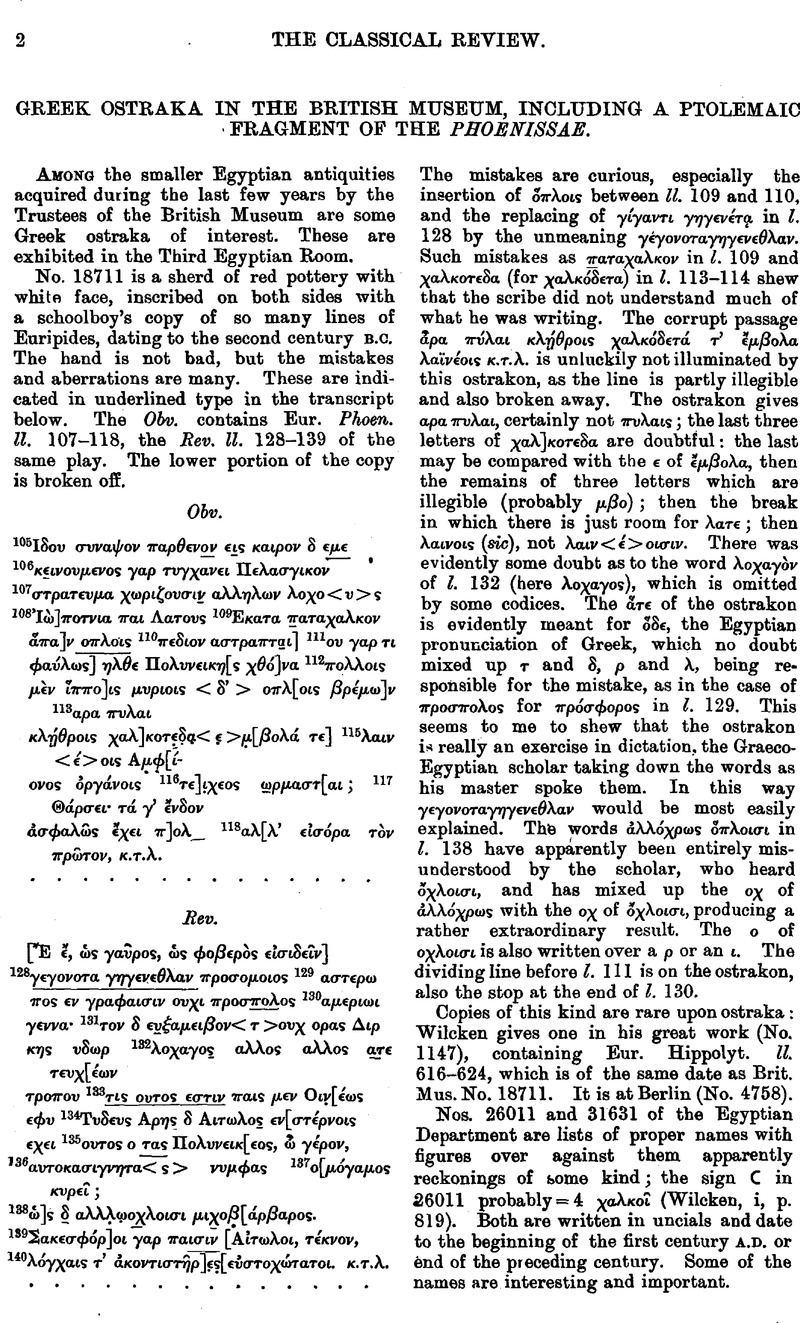No CrossRef data available.
Article contents
Greek Ostraka in the British Museum, including a Ptolemaic Fragment of the Phoenissae
Published online by Cambridge University Press: 27 October 2009
Abstract

- Type
- Original Contributions
- Information
- Copyright
- Copyright © The Classical Association 1904
References
page 3 note 1 Forshall I; Kenyon, Catalogue I, p. 46.Google Scholar
page 3 note 2 A receipt for taxes paid by Psametis, son of Senpsaëris, to the tax fanner, Sakhomneus, son of Psenmônth, and his partners, for the period Phamenot-Pharmouthi of the 7th year of Nero the lord (A.D. 60).
page 3 note 3 Mr. H. B. Walters suggests to me that the spelling Pelipus may be due to Macedonian influence. In the Macedonian dialect the name was written Πιλιπος (Hartwig, , Meisterschalen, p. 319Google Scholar).
page 4 note 1 In the Roman period we find both ![]() and φ transliterated in Latin by f: cf. the name Neferos (= Νεφερως,
and φ transliterated in Latin by f: cf. the name Neferos (= Νεφερως, ![]() , Nefer-ḥo, ‘ Beautiful Face ’ mentioned in the Latin military roll of the IInd cent. A.D. from Kôm Ushîm, published by Grenfell and Hunt, Fayum Towns, No. 105 p-256.
, Nefer-ḥo, ‘ Beautiful Face ’ mentioned in the Latin military roll of the IInd cent. A.D. from Kôm Ushîm, published by Grenfell and Hunt, Fayum Towns, No. 105 p-256.




